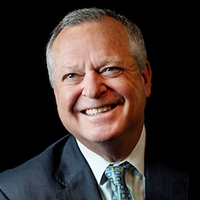
You can find all kinds of top 10 lists (or top 25, etc.) online these days, including the top consumer-obsessed/consumer-centric companies. However, health systems and other legacy healthcare stakeholders rarely make the healthcare category of these lists, which tend to be dominated by disrupters. For example, the healthcare category of Forbes’ 2022 top 100 most customer-centric companies includes two companies disrupting the traditional pharmacy industry, another disrupting addiction treatment, and one that serves the needs of unpaid family caregivers, an often-overlooked group.
Among high-profile consumer-obsessed disrupters in the retail sphere, Amazon stands out. Customer obsession is widely considered to be the fundamental pillar of its business philosophy. For several years, Amazon has been making forays into healthcare. Its recent acquisition of One Medical, if approved by the Federal Trade Commission, would give the tech giant more than 180 clinics with employed physicians across roughly two dozen markets. Sure, Amazon is experiencing a steep learning curve with its healthcare strategy. But the company is willing and able to view ventures that some would deem failures, such as Haven and Amazon Care, as learning experiences.
Amazon is only one of the deep-pocketed companies pouring money into healthcare and making consumer experience the centerpiece of their strategies. Google, Apple, JPMorgan Chase’s Morgan Health and CVS Health also fit in this category. They know that consumer experience is the Achilles’ heel of many legacy healthcare stakeholders.
I’ve been talking about the need for healthcare organizations to be consumer-obsessed since the mid-2000s. The first wave of tech start-ups began disrupting healthcare years ago. It’s even more critical today. There is a consumer experience explosion going on right now!
Does anyone believe that Amazon, with all its power, resources and consumer focus, is going to tinker around the edges of an industry that represents one-fifth of the U.S. economy? Not a chance. Meanwhile, many finance leaders lack the information they need even to start transforming the financial experience for consumers. When I speak at industry conferences, I ask attendees if they include consumer perceptions of revenue cycle in their patient-experience measures and incorporate that data in their C-suite discussions. Hardly anyone says they do. How does that stack up to the customer knowledge of the company that completely flipped the retail industry or of its equally consumer-savvy peers?
Clearly, legacy stakeholders have a lot of catching up to do. Transparent pricing, demystified billing, convenient scheduling, seamless online experiences, reducing fragmentation of care — it’s all addressed in HFMA’s Healthcare Dollars & Sense best practices. So what is standing in the way of progress? Sometimes, attitude is the biggest obstacle. Do we truly view patients as customers? And do we still believe that other health systems are our only real competitors?
Disrupters don’t have the history that we do in this unique industry. History can be valuable experience, but it can also be excess baggage. It’s time to do an honest self-assessment. Use HFMA’s Consumerism Maturity Model to visualize what a consumer-
obsessed provider organization looks like. The time to reinvent your organization’s business practices around consumers is now.





